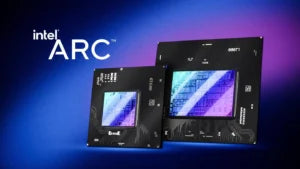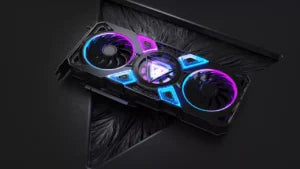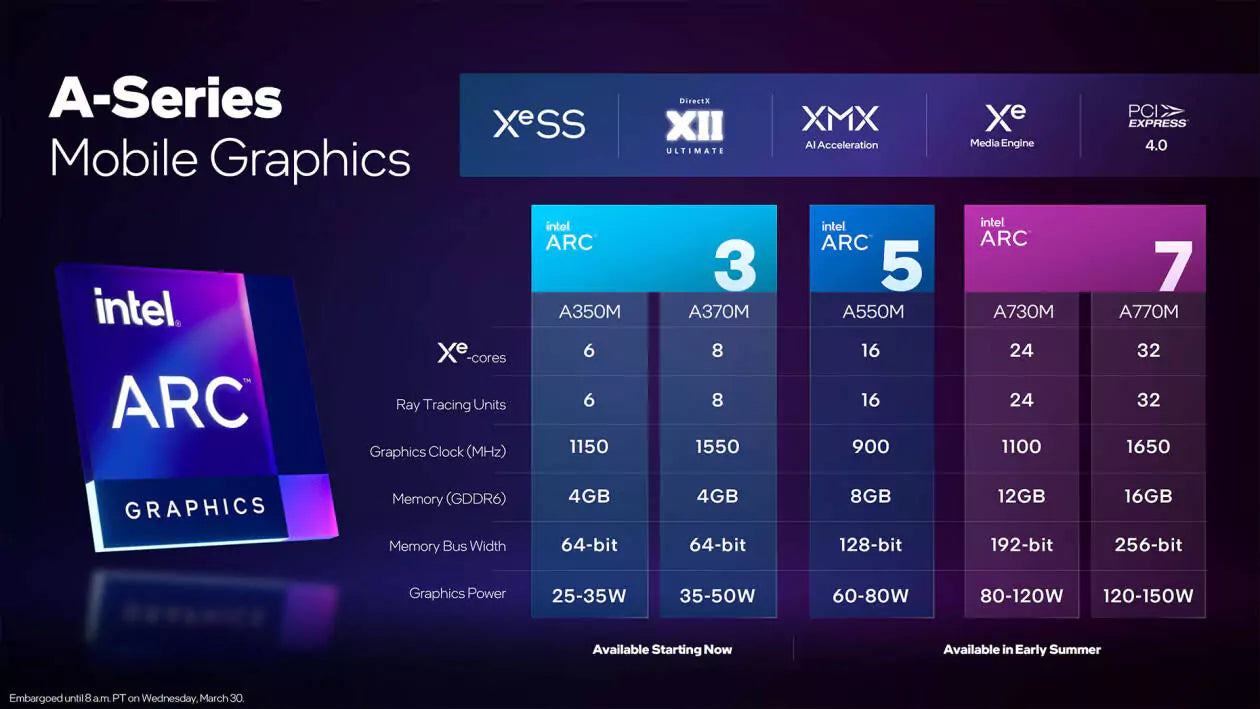Intel ARC GPU, a new player is entering the video card arena
In a market that has always been dominated by just two players, a third player is ready to take action. A player who could shake up the market, given his  power and market penetration. We are obviously talking about Intel and the GPUs (Graphic Processing Units, in Italian graphics cards ) that is coming out on the market with its Intel ARC GPUs.
power and market penetration. We are obviously talking about Intel and the GPUs (Graphic Processing Units, in Italian graphics cards ) that is coming out on the market with its Intel ARC GPUs.
The entry into the field takes place in a sector which, despite the current crisis, has been growing strongly for some years and which perhaps had its best performances during the lockdown. A sector, that of gaming , which remains in strong growth and which is at the same time very competitive but also quite profitable.
Intel ARC GPU, the idea
We don't know when exactly the idea was born in Intel's control room, but we know when the first "solid" rumors appeared. A long and well-studied process, mindful of the very high expectations, the strong competition and aware of some "too hasty" mistakes made in the past.
The Arc project, short for Alchemist, was born in 2018. In that year the new Xe architecture was presented, considered the perfect basis for Gaming GPUs and for the server and HPC segment.
A turning point from an architectural point of view which was supported by the entry into the Intel team of important skills and new people, whose CV made Intel's idea immediately clear.
 Intel ARC GPU, the path
Intel ARC GPU, the path
At least from the outside, the path taken by Intel for its ARC GPU is not very clear, but full of rumors and leaks regarding what could be the roadmap relating to Intel ARC GPU.
What is certain is that Intel started from integrated GPUs to move closer to classic GPU cards over the last three years, with the not too hidden aim of growing on the market over time thanks also to timely feedback from the market.
The latest step on the market, for example, are the latest generation Core processors (coded eleventh and twelfth generation) which have served as the perfect test bed for Intel's research and development centre.
Intel ARC GPU,architecture
The brain and heart of Intel cards is the Xe GPU architecture, a project to which Intel has dedicated time and resources.
The Xe architecture is rightly considered by Intel as an excellent starting point, thanks to its enormous versatility. This structure is in fact designed for various applications ranging from motherboard processors to video cards , from servers to laptops, from desktop computers to gaming stations.
Intel ARC GPU, the path
A journey lasting several years and still ongoing, which started from integrated video cards and aims to arrive at a fight on equal terms with Nvidia and AMD.
At a market level, everything began with the integrated GPUs that were presented on the eleventh generation Cores.
This version known by the commercial name of Xe-LP Iris was a first hybrid, a real bridge towards the first true Intel brand graphics card, known by the name of Iris Xe DG1.
Xe LP 
Iris immediately gave excellent results in comparison with direct competitors, with testimonials and certifications of 50% improvements in performance compared to the direct competitor.
In addition to first-level numerical data, a very complete proposal is also supplied, with complete support for the latest generation standards and the possibility of running even very demanding games albeit with low detail.
The launch
After Iris, also given its success on the market, Intel has formalized its presence in this competitive but interesting sector. In 2021, Intel officially presented its video card project to the world, indicating a future release of a series of Alchemist video cards (Arc or DG2 series) divided into various products, whose commercial name was Battlemage, Celestial and Druid.
What to expect from Intel ARC
All Intel ARC series video cards will be made on the TSMC 6nM production node. This architecture will then be applied to both desktops and notebooks, in different versions; from the most basic ones to computer gaming .
At the implementation level, Intel has thought of an architecture defined as "Render Slice".
Each of these "slices" will be made up of 4 Xe cores. The single Core will then integrate 16 256-bit vector engines, 16 1024-bit matrix engines and a hardware section dedicated to ray tracing.
From a memory point of view, the Intel ARC GPUs will be equipped with a 256bit BUS with dedicated GDDR6 RAM (with a minimum speed of at least 16 Gbps) and a maximum capacity of 16 Gb.
The versions
The entire catalog has not yet been revealed, but it is presumable that the Intel ARC GPU offer should be made up of at least five different video cards .
Nobody expects immediate competition to the top performances achieved by AMD and Nvidia, but Intel's intention is to cover a large cross-section of customers and requests, in order to carve out a good share of the market.
The first release
After a long wait, the first model has finally arrived on the market, even if only the Chinese one.
What has been introduced is probably the cheapest version of the Intel ARC GPU cards dedicated to gaming . Arc A380 is in fact considered an entry-level, which at least in the Chinese market was presented at a truly attractive price.
This is one of the cheapest variants of Intel Arc, a GPU (ACM-G11) equipped with 8 Xe cores and a frequency of 2,000 MHz; a card with 6GB of dedicated RAM, perfect as the first step in a catalog that will also include very competitive systems.
A small first step that was welcomed very favorably not only on the Chinese market, but also on the world market. The rumors are in fact starting to turn into reality and the interest in Intel ARC GPU cards is growing day after day.
Who knows how much longer it will take for the worldwide introduction, there has certainly been interest and we are certain that Intel ARC CPU will not let it slip away.












